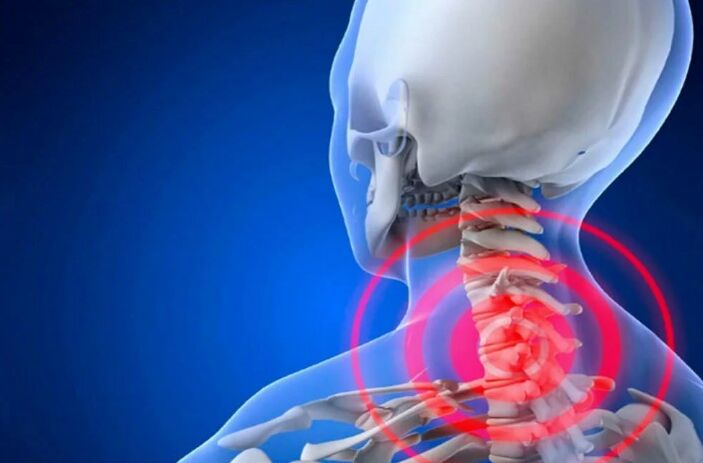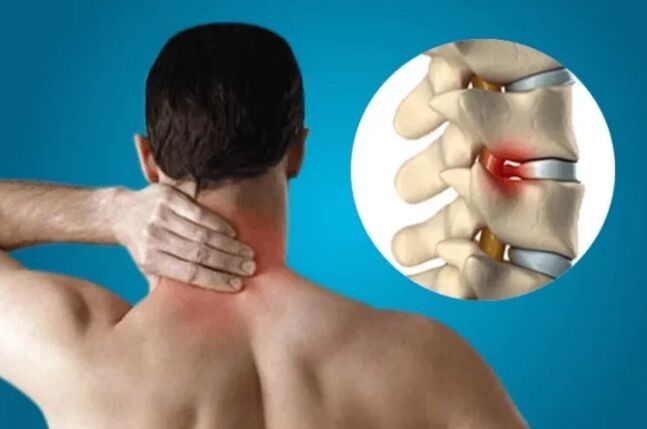Osteochondrosis of the cervical spine occurs due to pathological changes in the intervertebral discs. They weaken, become smaller, lose elasticity, cease to protect the vertebrae from damage and lose their ability to provide them with sufficient mobility. The main danger of cervical osteochondrosis is that the disease affects the nerve endings of the spinal region, which is why there is a disorder of the blood supply to the brain. Types and classification
Types and classification
Several stages of osteochondrosis of the cervical spine are distinguished:First: Initial changes in the cartilage tissue of the intervertebral disc;Second: the beginning of the thinning of the disk, the reduction of the distance between the vertebrae;Third: destruction of the disc, the beginning of deformity of the spine;Fourth: Strong deformity of the spine.Reasons
The main cause of cervical osteochondrosis is located in the structure of the spine in this area. All the vertebrae here fits tightly and easily displaced even with small loads.
Given how mobile the cervical region is, it is not surprising that the disease is so widespread.
Provoke the onset of the disease:Congenital anatomical characteristics (in people with long neck, osteochondrosis is more common);violation of the absorption of minerals;hormonal abnormalities;lack of enough muscle corset in the neck and shoulders;Hypodinamia;Hub injuries;hypothermia;posture disorders; Excess weight. SymptomsOften the first symptom of cervical osteochondrosis is a headache. It can be very strong, flowing as migraines, accompanied by dizziness and madhouse.The appearance of "flies", dark spots blurred in front of the eyes and a decrease in vision are characteristic.The pain in the neck with this disease gives the back of the head, forehead, ears, it intensifies when the position of the head changes.The hands are often noted.There is noise in the ears, hearing loss.Violation of movement coordination, seizure can occur.Diagnostics
SymptomsOften the first symptom of cervical osteochondrosis is a headache. It can be very strong, flowing as migraines, accompanied by dizziness and madhouse.The appearance of "flies", dark spots blurred in front of the eyes and a decrease in vision are characteristic.The pain in the neck with this disease gives the back of the head, forehead, ears, it intensifies when the position of the head changes.The hands are often noted.There is noise in the ears, hearing loss.Violation of movement coordination, seizure can occur.Diagnostics
To identify osteochondrosis of the cervical spine, they perform:Radiography that determines the condition of the vertebrae;calculated tomography to identify disk damage;Doppler, which detects blood flow disorders;Duplex scanning showing the condition of the blood vessels.Treatment
As an ambulance for cervical osteochondrosis, painkillers and anti -inflammatory drugs are required. Depending on the strength of the pain syndrome, local medicines (ointments and gels), tablets or injections are used.
Appointed too:vitamin therapy (B vitamins);medicines that relieve muscle spasm,Chondroprotector;physiotherapy procedures (electrophoresis, paraffin, magnetotherapy, etc. );medical gymnastics;Massage and self -massage.

























